9 Most Sustainable Lambswool Clothing Brands: The Conscious Consumer’s Guide
Affiliate Disclosure
Hey fellow impactful ninja ?
You may have noticed that Impactful Ninja is all about providing helpful information to make a positive impact on the world and society. And that we love to link back to where we found all the information for each of our posts.
Most of these links are informational-based for you to check out their primary sources with one click.
But some of these links are so-called "affiliate links" to products that we recommend.
Why do we add these product links?
First and foremost, because we believe that they add value to you. For example, when we wrote a post about the environmental impact of long showers, we came across an EPA recommendation to use WaterSense showerheads. So we linked to where you can find them. Or, for many of our posts, we also link to our favorite books on that topic so that you can get a much more holistic overview than one single blog post could provide.
And when there is an affiliate program for these products, we sign up for it. For example, as Amazon Associates, we earn from qualifying purchases.
What do these affiliate links mean for you?
First, and most importantly, we still only recommend products that we believe add value for you.
When you buy something through one of our affiliate links, we may earn a small commission - but at no additional costs to you.
And when you buy something through a link that is not an affiliate link, we won’t receive any commission but we’ll still be happy to have helped you.
What do these affiliate links mean for us?
When we find products that we believe add value to you and the seller has an affiliate program, we sign up for it.
When you buy something through one of our affiliate links, we may earn a small commission (at no extra costs to you).
And at this point in time, all money is reinvested in sharing the most helpful content with you. This includes all operating costs for running this site and the content creation itself.
What does this mean for me personally?
You may have noticed by the way Impactful Ninja is operated that money is not the driving factor behind it. It is a passion project of mine and I love to share helpful information with you to make a positive impact on the world and society. However, it's a project in that I invest a lot of time and also quite some money.
Eventually, my dream is to one day turn this passion project into my full-time job and provide even more helpful information. But that's still a long time to go.
Stay impactful,
The often fine and soft lambswool is a coveted textile in fashion. Yet some of the lambs that provide the hair to make such luxurious material are raised in farming systems that are neither sustainable nor ethical. On top of that, fashion greenwashing makes it harder for you and all other consumers to determine which brands offer the most eco-friendly lambswool garments. So, we had to ask: Which are the most sustainable lambswool clothing brands?
The most sustainable lambswool clothing brands are Eileen Fisher, Johnstons of Elgin, and Vollebak, which strive for circularity and use technology to increase product lifespan and performance. Additionally, Unrecorded and Stella McCartney cut down carbon footprint and adhere to ethical practices.
Whether you are searching for a sweater, a pair of socks, or some sportswear to add to your wardrobe without negatively impacting the soil, the water, the animals, and other people, there is a brand for you. So, let’s keep reading to learn more about the most sustainable lambswool clothing brands and how they ensure sustainable, ethical practices.
Here’s How Sustainable Lambswool Fabrics Generally Are
Lambswool fabrics are made with the first shearing of a sheep (which is still at the lamb stage). It is a natural material that readily biodegrades at the end of its life. During the usage phase, wool clothing and household items can be washed sparsely, saving water and energy. As an animal-derived product, wool fabrics share the impact that farming has on the land and the animals themselves. Such an impact can be reduced by sourcing responsible, regenerative, and organic wool. It’s also important to note that recycled wool is ranked Class A—the most sustainable category of fibers by The Common Objective’s Made-By Environmental Benchmark for Fibres.
“Sustainable: The ability to be maintained at a certain rate or level | Avoidance of the depletion of natural resources in order to maintain an ecological balance”
Oxford Dictionary
To understand the sustainability of wool, we’ve assessed the life-cycle and each stage’s sustainability. This life-cycle assessment (LCA) is a method to evaluate the environmental impacts of products and materials. Here’s the quick summary of our LCA of wool!
What makes sustainable lambswool: Recycled lambswool is considered the most sustainable lambswool variety because using discarded wool materials to make recycled lambswool fabrics reduces pressure on land, water, and other resources needed for rearing more sheep for their one and only first coat of hair.
Additionally: Lambswool fabrics made with fibers from organic and regenerative farming systems are also considered sustainable because these natural fibers are cultivated ethically without any added toxic synthetic chemicals and, thus, are fully biodegradable at the end of their life.
Here’s How We Selected the Most Sustainable Lambswool Clothing Brands
The brands on this list were chosen based on their commitment and actions to promote sustainable practices while reducing the environmental impacts of the textile industry.
They are transparent about their materials, processes, and workforce management within their supply chain.
Some brands focus their efforts on reducing waste and optimizing natural resources while others strive to reduce the carbon footprint of their clothes.
All of these brands share the commitment to reshape the textile industry toward a more sustainable and Earth-friendly sector.
These Are the 9 Most Sustainable Lambswool Clothing Brands
Most Sustainable Lambswool Clothing Brands
Overall, these lambswool clothing brands are sustainable. Yet, they take various approaches to reduce environmental impacts and uphold ethical standards. Let’s dive into each brand and find out more.
Eileen Fisher: A Sustainable Fashion Brand Focusing on Eco-Friendly Materials and Textile Circularity
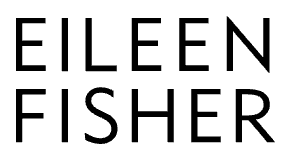
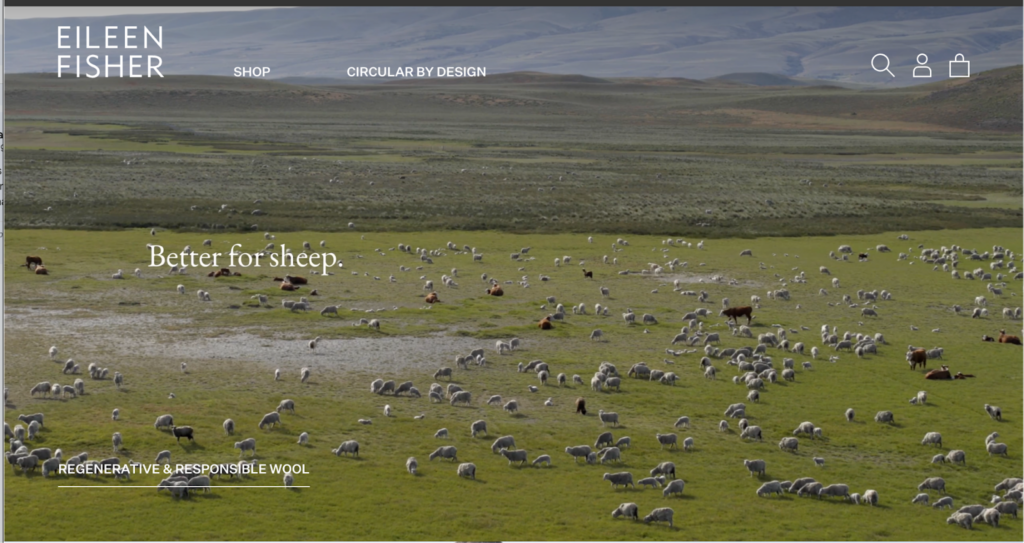
“The Biggest Thing We Can Do Is Reduce”
Eileen Fisher, founder of Eileen Fisher
🌎
How do they ensure their sustainability?
Eileen Fisher’s sustainability efforts focus on using eco-friendly materials, including recycled cotton, organic cotton, linen, and hemp, reducing greenhouse gas emissions generated from their operations and supply chain, reducing fabric and corporate waste, and recycling the brand’s used clothes back into new products. Their commitments to sustainable materials, circular systems, and environmentally friendly practices are demonstrated in initiatives like VISION 2020, Horizon 2030, and Renew. They are also certified as a B Corporation and a Bluesign® brand.
🌐
How do they ensure their ethics?
Eileen Fisher is committed to ethical practices. They have worker empowerment initiatives such as collective bargaining and the right to make a complaint. For example, their “Our Love, Peru” project supports over 450 families in and around Arequipa with higher fair trade wages and investments in the local community. Additionally, Their VISION 2020, set in 2015, tackled unethical labor practices. It has a formal animal welfare policy aligned with Five Freedoms. Additionally, Eileen Fishers used lambswool and sheep wool certified with Responsible Wool Standard, appropriately addressing the welfare of sheep (and their calves) and the land they graze on.
🤝
Are they part of any giving-back programs?
Eileen Fisher supports many women-owned businesses. The brand has provided, since their inception, many grants for women, including the current program Supporting Women in Environmental Justice.
🛍️
What is their product range?
- Best for: elegant, classic, and casual women’s clothes
- Product range: dresses, blouses, sweaters, cardigans, pants, skirts and outerwear, shoes, accessories
- Price range: $$$
- Size range: XXS–3XL
Johnstons of Elgin: Ethical Knitwear From Established Luxury Clothing Label


“We have worked with natural, renewable, biodegradable fibres since 1797 and strive to reduce our environmental footprint year after year.”
Johnstons of Elgin
🌎
How do they ensure their sustainability?
Johnstons of Elgin prioritizes sustainability by setting up a low-carbon footprint and low-waste production using mainly natural fibers while working to preserve grasslands, the starting point of their cashmere fibers. Natural fabrics, including cashmere, merino lambswool, and sheep wool account for 99.88% of all fibers used in their portfolio. Further down the life-cycle in the manufacturing stage, Johnstons of Elgin strives to reduce manufacturing waste: 87% of their manufacturing waste is recycled to create other products. Specifically, batch ends of yarns and cut-offs are redyed to be used in scarves, while waste fiber goes into fillings or insulation materials whenever possible. Plastic, if used during the manufacturing process, is reused or recycled. Furthermore, the brand lowers their carbon footprint by increasing energy efficiency and working with energy providers possessing renewable energy certificates. Johnstons of Elgin’s incentives in reducing energy usage include investing in energy-efficient lighting, improving boiler maintenance, and implementing air-source heat pumps. Johnstons of Elgin also uses low-impact, non-toxic dyes in all of their products. Lastly, they strive for circularity by opting for high-quality, recyclable materials, offering repair services, and facilitating recycling of their cashmere products.
🌐
How do they ensure their ethics?
Johnstons of Elgin ensures their ethics by striving for transparency in how their products are made. Some of their products now have a Digital ID, enabling traceability from fiber to finished garment. Regarding the people making their products, they pay a living wage, provide training for personal development, recognize trade unions, and uphold health and safety. They also trace most of their supply chain. Furthermore, animal welfare is held at the heart of their operation. Specifically, they source cashmere with Sustainable Fibre Alliance (SFA) certification and mulesing-free merino sheep wool and lambswool with Responsible Wool Standard certification.
🤝
Are they part of any giving-back programs?
Johnstons of Elgin is one of three founding members of the Sustainable Fibre Alliance (SFA), a nonprofit international organization working in the cashmere supply chain. SFA funds various programs in Mongolia to train communities and promote ecological and social projects to restore grasslands, ensure animals’ well-being, and secure herders’ livelihoods. For example, their Young Herders program, “Kharaatsai” (Young Swallows), gives students a deeper understanding of their natural environment through biodiversity, weather patterns, and soil health classes.
🛍️
What is their product range?
- Best for: womenswear, menswear, kidswear
- Product range: jackets, blazers, hoodies, sweatshirts, sweaters, coats, hats, gloves, socks, pants
- Price range: $$$$
- Size range: XS–XXL
Vollebak: Clothes From the Future


“We’re heading into a world of climate change, resource scarcity, disease spreading around the world and space colonisation. We look around and wonder, why is no-one else designing for this.”
Vollebak
🌎
How do they ensure their sustainability?
Vollebak ensures sustainability by designing innovative, long-lasting clothes for a future of resource scarcity and extreme weather conditions. They implement their design philosophy in three collections representing three sustainability solutions. Firstly, Vollebak uses animal and plant-derived fibers to make clothes that require as little energy as possible and leave no trace of their existence at the end of their lives. For example, they combine algae, which produce 50–80% of the oxygen on our planet, with materials like wood pulp and hemp fiber to create biodegradable clothes with a bioengineered black color. Their black algae range uses no synthetic carbon black ink. Secondly, they reuse waste to make clothes in their Garbage collection. For example, Vollebak produces fire-resistant sweaters from old bulletproof vests and firefighter suits that were destined to spend the next few centuries in a landfill. Lastly, they innovate in material technology to make clothes with a longer life expectancy than those wearing them. Their 100 Year pants, hoodies, and sweaters are designed to resist fire, wind, water, and, most importantly, time.
🌐
How do they ensure their ethics?
Regarding animal rights, they source lambswool certified by Responsible Wool Standard and from mulesing-free merino sheep, ensuring the animal’s well-being.
🤝
Are they part of any giving-back programs?
Vollebak is not known to be part of any giving-back programs.
🛍️
What is their product range?
- Best for: menswear
- Product range: coats, jackets, fleeces, sweaters, knitwear, shirts, T-shirts, denim, pants, shorts, accessories
- Price range: $$$
- Size range: XS–XXL
Unrecorded: Unisex Clothing Made Sustainably With Consideration to Quality and Elegance

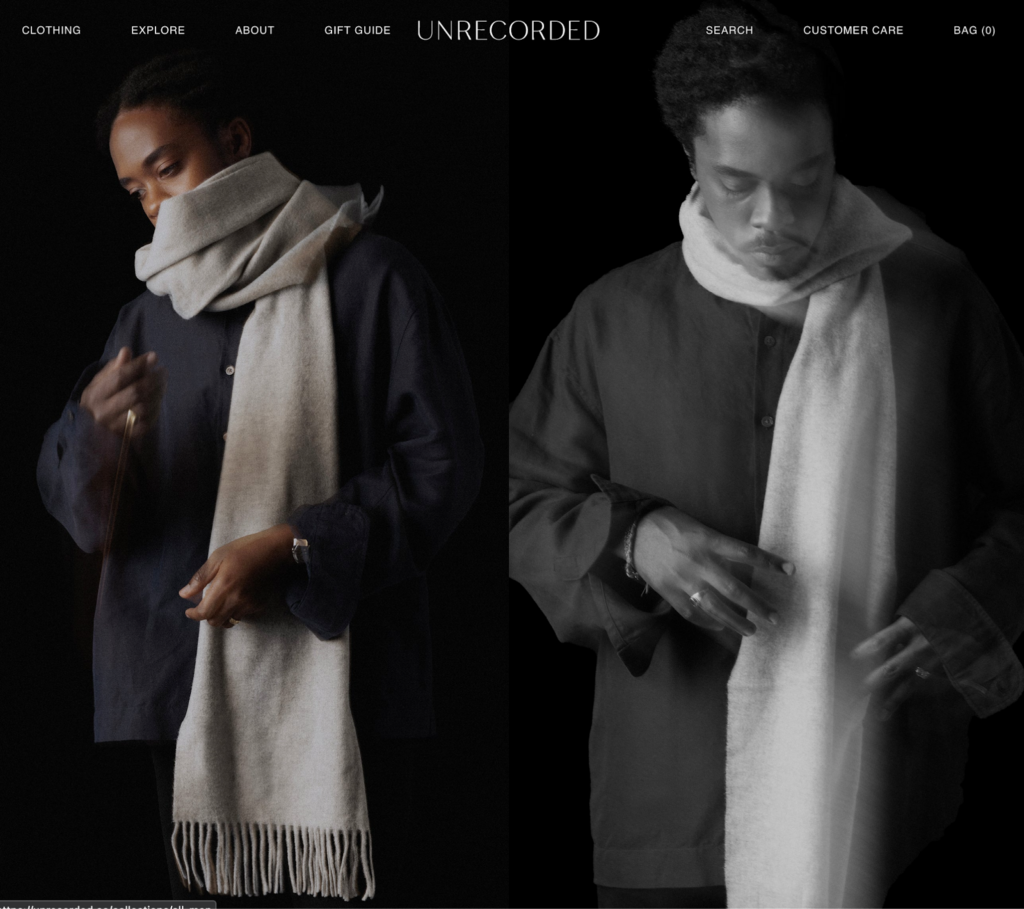
“In our determined pursuit of refinement, we embrace the charm of natural fibers, carefully chosen for their exceptional durability and resilience. ”
Unrecorded
🌎
How do they ensure their sustainability?
Unrecorded ensures sustainability by using a high proportion of low-impact natural fabrics, lowering carbon emissions, and minimizing textile waste. They craft their designs using a selection of natural fibers, including lambswool and sheep wool with RWS certification and from non-mulesed sheep. They also use linen, hemp, recycled cotton, and organic cotton with GOTS certification. Additionally, they strive to incorporate more Dutch-made fabrics to reduce the transporting footprint between sourcing and manufacturing factories in Portugal and Italy. Lastly, all orders are shipped in FSC-certified cardboard boxes.
🌐
How do they ensure their ethics?
Unrecorded sets up their final stage of production in the European Union, a low/medium risk region for labor abuse. They also trace most of their supply chain and visit their suppliers regularly. Regarding animal rights, they follow the Responsible Wool Standard, appropriately addressing sheep’s welfare and the land they graze on.
🤝
Are they part of any giving-back programs?
Unrecorded is not known to be part of any giving-back programs.
🛍️
What is their product range?
- Best for: unisex apparel
- Product range: knitwear, sweaters, hoodies, pants, shirts, T-shirts, polo shirts, outerwear, socks, scarves, hats, accessories
- Price range: $$
- Size range: XS–XXL
Stella McCartney: Luxurious Fashion Clothes Made Ethically and Sustainably
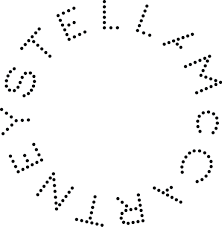
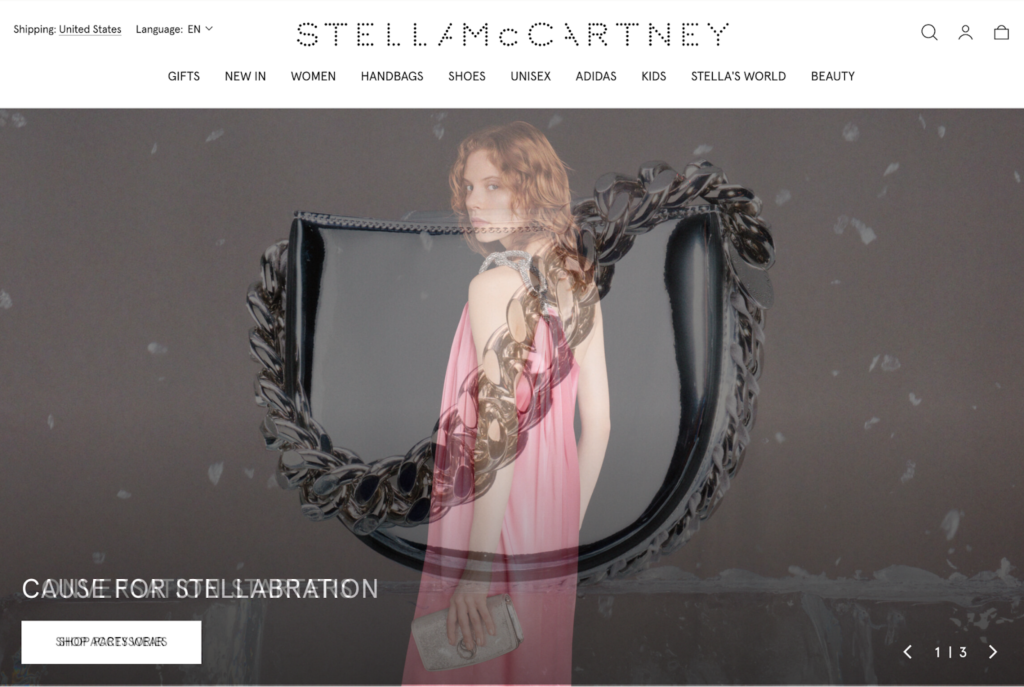
“We are committed to being an ethical, modern and honest company without compromising on luxury or quality.”
Stella McCartney
🌎
How do they ensure their sustainability?
Stella McCartney ensures sustainability by making use of the most cutting-edge and progressive materials that aim to reduce the impact on the planet and are always cruelty-free while following the principles of circularity. They use a medium proportion of eco-friendly and innovative materials, including GOTS-certified organic cotton, cashmere from 100% recycled waste Re.Verso™, and low-impact plant-based alternative materials (BananaTex®, VEGEA, Mylo™, MIRUM®). Further down the life-cycle, Stella McCartney employs technological advances to trace their products, lower their manufacturing impact, and increase their circularity. Additionally, they exclusively use paper that is either FSC-certified or made from at least 50% recycled content in their packaging. In 2014, the brand launched Clevercare—a garment labeling system covering five simple areas of clothing care: washing, temperature, drying, ironing, and dry cleaning to help extend the life of garments, decrease the number of pieces that end up in landfill, and reduce life-cycle environmental footprint.
🌐
How do they ensure their ethics?
Stella McCartney commits to transparency across supply chains through diligent reporting, measuring, and tracking. Stella McCartney is a member of the Ethical Trading Initiative (ETI), a human rights organization driving force in ethical trade. They also trace most of their supply chain. Additionally, Stella McCartney used lambswool and sheep wool certified with Responsible Wool Standard, appropriately addressing the welfare of sheep (and their calves) and the land they graze on.
🤝
Are they part of any giving-back programs?
Stella McCartney partners with and supports many charities, including but not limited to BioPlanet, Million Trees Miami, Naked Heart Foundation, Meat Free Monday, and Sea Shepherd.
🛍️
What is their product range?
- Best for: womenswear, menswear, kidswear
- Product range: shirts, skirts, denim, sweaters, swimwear, dresses, pants, jackets, blazers, hoodies, knitwear, tops, blouses, T-shirts, underwear, socks, shorts, jumpsuits, playsuits, shoes, accessories, plus size
- Price range: $$$
- Size range: XS–XXXL
KIVAT: Cotton and Woolen Children’s Clothes Made Responsibly


“In addition to making quality products, we want to set an example of a responsible company, one where everyone can be proud of their work.”
KIVAT
🌎
How do they ensure their sustainability?
KIVAT ensures sustainability by keeping the environmental impact of their products as small as possible throughout the entire life-cycle. They start with sourcing a high proportion of high-quality natural materials to make sure the products can withstand being used hundreds of times. These include mulesing-free lambswool, Bluesign-certified wool, GOTS-certified organic cotton, and silk. They opt for a small amount of synthetic spandex (elastane) in some of their products to increase their lifespan. Further down the life-cycle in the manufacturing stage, KIVAT lowers their carbon footprint by sourcing and storing large batches of yarns to minimize transporting legs. All raw materials are trucked across Europe from spinning mills to KIVAT’s factories, with no air freight involved. Additionally, in 2022, they set up a solar power plant on the roof of their factory in Tampere, Finland, which produced about a third of the total electricity demand. Regarding cutting waste, KIVAT recycles the little wool waste to make small products and transports cotton waste to a power plant a short distance away for combustion. Lastly, they encourage consumers to correctly dispose of the paper packaging in which their products are delivered, to care for their clothing items with environmental perspectives as suggested in written detailed instructions, and to recycle their KIVAT product once it has gotten too small for their growing child. KIVAT partners with Ninyes, the first European store that exclusively sells responsibly manufactured second-hand clothes to facilitate selling the used products sent back by consumers. In return for recycling, you will get a refund of 50% or 70% of your pre-loved KIVAT’s estimated sale price.
🌐
How do they ensure their ethics?
KIVAT is fully transparent about their manufacturing processes. Since their inception, KIVAT has intentionally kept production in Finland to have full control over the quality of the products and working conditions in which their products are made. Regarding animal well-being, they source merino wool and lambswool exclusively from mulesing-free sheep, avoiding the cruel treatment of the animals.
🤝
Are they part of any giving-back programs?
KIVAT is not known to be part of any giving-back programs.
🛍️
What is their product range?
- Best for: kidswear, womenswear
- Product range: overalls, cardigans, sweaters, pants, leggings, socks, hats, scarves, accessories
- Price range: $$
- Size range: S–L
Beaumont Organic: Create “Contemporary Conscious Clothing” Responsibly

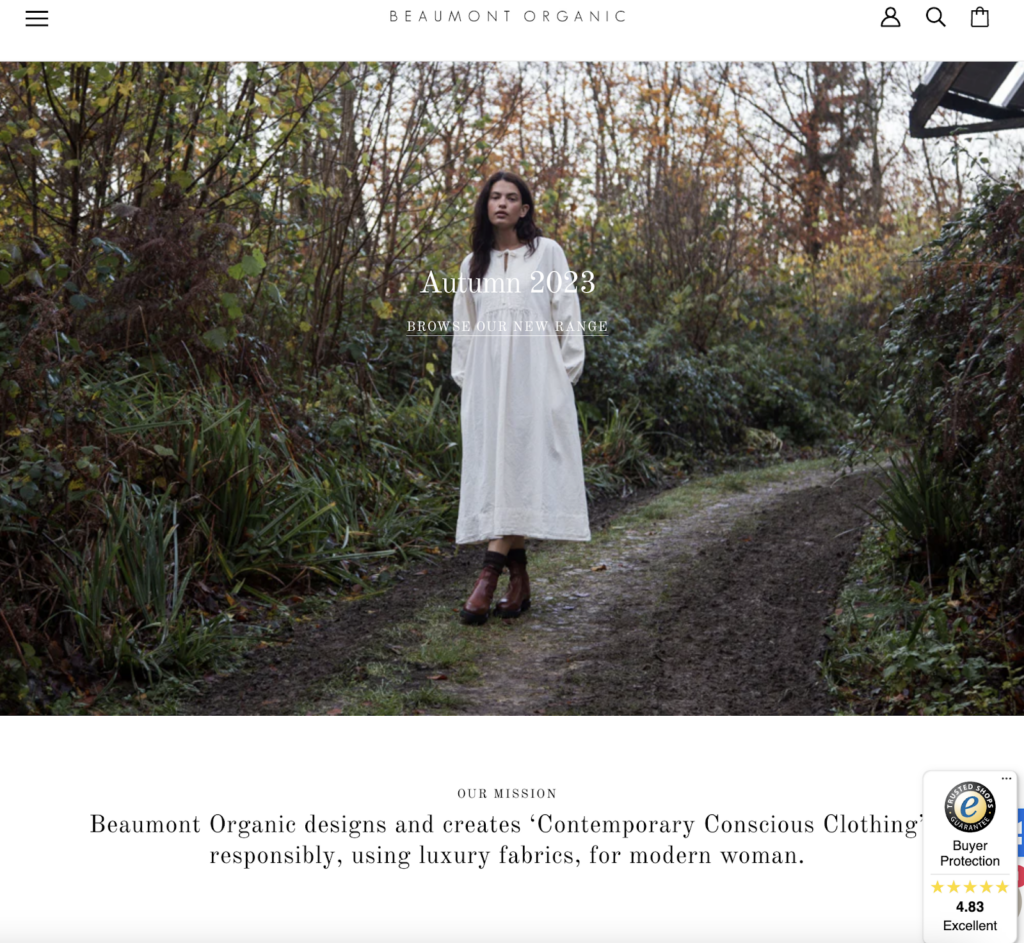
“We work hard behind the scene to provide you with full transparency into the sustainability of our practices and our suppliers”
Beaumont Organic
🌎
How do they ensure their sustainability?
Beaumont Organic prioritizes sustainability by sourcing organic and eco-friendly materials, using renewable energy in their supply chain, and reducing waste by using recycled packaging and offering clothes repairs. Additionally, they promote textile circularity with their online circular resale scheme, allowing customers to pass their pre-loved garments onto a new home. The brand features GOTS-certified organic cotton, organic linen, TENCEL™, and recycled fabrics.
🌐
How do they ensure their ethics?
Beaumont Organic is fully transparent about the final stage of their clothes: European factories that pay fair wages and have good working conditions. Beaumont Organic uses wool accredited by the Responsible Wool Standard, guaranteeing the welfare of the animals in their supply chain.
🤝
Are they part of any giving-back programs?
The Beaumont Organic Foundation has supported various community give-back projects in Fiji, including hospital renovations.
🛍️
What is their product range?
- Best for: womenswear, babywear, homeware, accessories
- Product range: shirts, pants, jackets, blazers, knitwear, blouses, underwear
- Price range: $$$
- Size range: XS–XXL
Foxology: Sustainable and Ethically-Sourced Knitwear


“Foxology produces durable clothing, designed to be timeless and will see our customers through season after season. The fabrics and workmanship are of the highest quality and long-lasting. This is ‘slow fashion’.”
Foxology
🌎
How do they ensure their sustainability?
Foxology ensures sustainability by exclusively sourcing high-quality natural fabrics to make long-lasting knitwear. These included GOTS-certified organic cotton, non-mulesed lambswool, and merino wool. Additionally, they use a whole garment, seam-free 3D knitting technology to ensure no waste manufacturing. Foxology also eliminates all plastic in their packaging. Their products are wrapped in protective tissue and delivered using biodegradable bags or boxes. Lastly, Foxology publishes product care instructions to help extend the lifespan of woolen and cotton clothing items while lowering the environmental impact of owning and wearing them.
🌐
How do they ensure their ethics?
Regarding animal rights, the brand sources their lambswool and sheep wool from non-mulesed merino sheep, avoiding the cruel treatment of the animals. Foxology manufactures their knitwear in the UK, a medium-risk country for labor abuse.
🤝
Are they part of any giving-back programs?
Foxology is not known to be part of any giving-back programs.
🛍️
What is their product range?
- Best for: womenswear, menswear
- Product range: sweaters, tops, base layers, dresses, pants, scarves, hats, activewear, accessories
- Price range: $$
- Size range: XS–XXL
Thought: Clothes Made With Responsibly-Sourced Materials


“We’ve sourced the most earth-kind fabrics we could find. So you don’t have to think about it.”
Thought
🌎
How do they ensure their sustainability?
Thought ensures sustainability by using eco-friendly materials and reducing textile waste. They use low-impact fabrics, such as organic cotton, hemp, plant-based semi-synthetic fabrics, and recycled fabrics. Instead of plastic packaging, they use FSC-certified recycled paper labels and 100% corn-based, compostable paper mailing bags. They also tackle the textile waste problem by partnering with TRAID, offering pre-loved clothing a new lease on life while promoting a circular fashion economy. Lastly, they provide resources to care for and mend clothes to extend their lifespan, lowering the carbon footprint.
🌐
How do they ensure their ethics?
Thought has a Code of Conduct that covers all of the ILO Four Fundamental Freedoms principles. As well, more and more of their garments are GOTS and Fairtrade Certified. Their ethical commitment includes upholding animal welfare.
🤝
Are they part of any giving-back programs?
Thought is not known to be part of any giving-back programs.
🛍️
What is their product range?
- Best for: womenswear, menswear, childrenswear
- Product range: shirts, skirts, denim, sweaters, scarves, dresses, pants, jackets, blazers, knitwear, tops, blouses, T-shirts, socks, stockings, tights, shorts, underwear, sneakers, jewelry, jumpsuits, playsuits
- Price range: $$
- Size range: XS–XXL
Lambswool Fabrics: Odor-Resistant Natural Textiles Good for Both Cold and Warm Weather
Lambswool is a wonderful material from nature, as it can keep you warm in the winter and cool in the summer. Additionally, its high breathability and odor resistance help lower the impact of its usage phase. At the end of their life, pure lambswool fabrics are readily biodegradable and suitable for composting.
Here are the life-cycle stages of lambswool fabrics and each stage’s sustainability assessment:
- Sourcing of lambswool fabrics: The raw material for lambswool fabric comes from a sheep’s first shearing when it’s still considered a lamb. The environmental impacts of sourcing this material vary significantly depending on the sheep farms, with organic farming practices being the most sustainable. Sourcing wool fibers from discarded lambswool waste is even more sustainable as it utilizes waste instead of putting strain on natural resources for raising additional sheep.
- Manufacturing of lambswool fabrics: Manufacturing of virgin lambswool fabrics is energy and water-intensive, making lambswool processing less sustainable. This process starts with collecting the first fleece from a lamb. In many cases, the shearing is painful and stressful for the animal. The processes that come after fiber collection are mostly mechanical. Alternatively, manufacturing recycled wool has a high energy demand, particularly regarding breaking down wool waste to retrieve the fibers (shredding or fraying). The mechanical process of breaking down wool waste to recover the fibers often shortens the fiber length and, thus, can’t be repeated indefinitely (to allow recycled wool to be truly circular).
- Transportation of lambswool fabrics: Transporting can be a carbon-intensive stage in the life-cycle of clothing items made with lambswool fabrics due to the distances covered and emissions associated with transporting vehicles. Lambswool fabrics typically travel from pasture lands (virgin lambswool) or collection hubs (recycled lambswool) to processing and finishing factories, sorting centers, shops, and consumers’ homes before going to recycling centers or landfills.
- Usage of lambswool fabrics: The usage of lambswool is generally sustainable. Wool fabrics, the lambswool variety included, require less frequent washes because they are breathable, odor-resistant, quick-to-dry materials.
- End-of-life of recycled cotton fabrics: The end-of-life stage for lambswool is generally sustainable because untreated lambswool is fully biodegradable and compostable. Blending lambswool fibers with synthetic fibers increases the strength and durability of the material but reduces its recyclability and degradability.
Lambswool fabrics are on a spectrum from unsustainable to sustainable, with responsible, regenerative, organic, and recycled lambswool fibers making the most sustainable varieties. Particularly, recycled wool is often considered a preferred textile option because recycling wool waste reduces pressure on land, water, and other resources needed to raise animals for their hair or fleece.
Why Is It Important to Buy Products Made of More Sustainable Fabrics
It is important to buy products made of more sustainable fabrics because a sustainable textile industry has a lower carbon footprint, helps save natural resources, and is better for forests, animals, and humans.
Buying Sustainable Fabrics Reduces Your Carbon Footprint
The production of clothing and footwear is estimated to contribute 10% of global greenhouse gas emissions—more than all international flights and shipping combined. If the fashion industry were a country, it would be the fourth largest emitter of carbon dioxide.
One way to reduce the carbon footprint of the clothes you buy is to opt for sustainable fabrics. Sustainable fabrics, which are often made with natural or recycled fibers, have relatively low carbon footprints compared to petroleum-based fabrics. For example, organic cotton made in the US has a carbon footprint of 2.35 kg CO2 (per ton of spun fiber)—a quarter of polyester’s carbon footprint.
Buying Sustainable Fabrics Reduces Demand For Natural Resources and Waste Management
The textile industry uses water and land to grow wool and other fibers. It is estimated that 79 billion cubic meters of water were used for the sector worldwide in 2015. For example, producing a single cotton T-shirt requires as much water as one person drinks for 2.5 years (2,700 liters of fresh water).
Worse yet, the textile economy is vastly more linear than circular: the largest amount of resources used in clothes ended up in landfills (instead of being recycled to remake clothes). According to a report by the Ellen MacArthur Foundation,
- Less than 3% of materials used in the textile economy in 2015 came from recycled sources.
- In other words, more than 97% of resources used in making clothes are newly extracted.
When clothing items are disposed of within a short period of time—under a year in the case of half of the fast fashion clothes—the natural systems that provide raw materials for fabrics don’t have enough time to recover and regenerate, which could lead to ecological breakdown.
Sustainable fabrics are made with less water and emissions while lasting longer:
- Because they are durable, you don’t need to buy new clothes too often.
- Thus, you help reduce the pressure to extract more resources for making new items.
Similarly, making and consuming sustainable fabrics made with recycled materials reduces the demand for virgin materials while helping tackle waste management.
Buying Sustainable Fabrics Encourages Sustainable Management of Forests
Sustainable plant-based fabrics are made with raw materials from forests and plantations that are sustainably managed, such as complying with FSC standards.
When you buy sustainable plant-based fabrics, you discourage unsustainable forestry practices like illegal logging. You can help reduce deforestation, biodiversity loss, and the effects of climate change.
Buying Sustainable Fabrics Encourages Fairer Treatment of Animals
The fashion industry is rife with animal mistreatment when it comes to making animal-based fabrics like wool or silk. Every year, billions of animals suffer and die for clothing and accessories.
Buying sustainable vegan alternatives can help reduce the pressure on raising more and more animals to meet the demand for animal-based fabrics while sacrificing their well-being and lives.
Suppose you have to buy fabrics made with, for example, wool or silk; make sure you only choose brands committed to cruelty-free products. In that case, you help advocate better treatments for animals raised within the textile industry.
Using Sustainable Fabrics Encourages Fairer Treatment of Textile Workers
Recent statistics from UNICEF estimated as many as 170 million child laborers worldwide, many of whom were engaged in some form of work in the textile industry. They don’t get paid minimum wages and often work long hours.
When you buy sustainable fabrics from brands transparent about the working conditions at their factories, you discourage the use of child labor and help promote better working conditions for textile workers.
How Can You Generally Buy More Sustainable Fabrics
The key to sustainably buying fabrics is to check on relevant environmental and original certifications.
For natural fabrics:
- Global Organic Textile Standard (GOTS): A globally-recognized certification system that ensures a certain threshold of organic content has been met. It covers manufacturing, packaging, labeling, transportation, and distribution (but not what happens in the fields where crops are grown).
- USDA Certified Biobased Product: The USDA BioPreferred® Certification is a voluntary certification offered by the United States Department of Agriculture. The certification identifies products made from plants or other renewable materials.
- Ecolabel: Ecolabel is the official European Union voluntary label recognized worldwide for certified products with a guaranteed, independently-verified low environmental impact. The label requires high environmental standards throughout the entire life-cycle: from raw material extraction through production and distribution to disposal. It also encourages companies to develop innovative, durable, easy-to-repair, and recyclable products.
For plant-based semi-natural/semi-synthetic fabrics:
- Forest Stewardship Council: An FSC certification ensures that the wool (or wool-like material) comes from responsibly managed forests that provide environmental, social, and economic benefits.
There are two types of FSC Certification:- FSC Forest Management Certification, with a focus on the origin of the wood—the forest.
- FSC Chain of Custody Certification, which focuses on the path from the forest to the customer’s home.
- Program for Endorsement of Forest Certification: PEFC’s approaches to sustainable forest management are in line with protecting the forests globally and locally and making the certificate work for everyone. Getting a PEFC certification is strict enough to ensure the sustainable management of a forest is socially just, ecologically sound, and economically viable but attainable not only by big but small forest owners.
For recycled fabrics:
- Recycled Claim Standard (RCS): The Textile Exchange RCS was originally developed as an international, voluntary standard that sets requirements for third-party certification of recycled input and chain of custody.
- The Global Recycled Standard (GRS): The Global Recycled Standard (GRS) is an international, voluntary, full product standard that sets requirements for third-party certification of Recycled Content, chain of custody, social and environmental practices, and chemical restrictions. It can be used for any product with more than 20% recycled material.
For all types of fabrics:
- STeP by OEKO-TEX®: STeP by OEKO-TEX® is an independent certification system for brands, retailers, and manufacturers from the textile and leather industry. It communicates organizational environmental measures, including reducing carbon footprint and water usage.
- OEKO-TEX® Standard 100: OEKO-TEX® labels aim to ensure that products pose no risk to human health (i.e., containing banned chemicals).
Some certifications that are signaling brands’ efforts toward lowered environmental impacts and a circular economy are:
- B Corp Certification: The label B Corp is a certification reserved for for-profit companies. Certified holders are assessed on their social and environmental impacts.
- Cradle2Cradle certification: Cradle2Cradle provides a standardized approach to material circularity. It assesses whether products have been suitably designed and made with the circular economy in mind covering five critical categories: material health, material reuse, renewable energy and carbon management, water stewardship, and social fairness.
Final Thoughts
Lambswool fabrics are on a spectrum from unsustainable to sustainable, largely depending on the farming systems in which animals are raised for their hair or fleece. Responsible, regenerative, and organic lambswool fabrics are sourced from farms where the welfare of animals and lands are taken care of, leading to higher sustainability. Additionally, recycled wool fabrics, lambswool variety included, are among the most sustainable textile materials largely because recycling wool waste reduces pressure on land, water, and other resources needed to farm sheep for their first fleece.
By purchasing new or pre-loved responsible, regenerative, organic, and recycled lambswool clothes from brands that commit to sustainability, you support their mission to create a fairer and less harmful textile industry for all lives on Earth.
Here is the list (again) of the most sustainable lambswool clothing brands:
- Eileen Fisher
- Johnstons of Elgin
- Vollebak
- Unrecorded
- Stella McCartney
- KIVAT
- Beaumont Organics
- Foxology
- Thought
To make your use of these fabrics even more sustainable, follow these steps:
- Buy second-hand, recycled, or upcycled clothes made with responsible, regenerative, organic lambswool.
- While using lambswool clothes, maximize the number of wears between washes and keep them as long as possible.
- At the end-of-life of your lambswool clothes, upcycle the materials to extend their usage and arrange for them to be recycled or properly disposed of.
Stay impactful,

Sources
- Impactful Ninja: How Sustainable Are Lambswool Fabrics? A Life-Cycle Analysis
- Impactful Ninja: How Sustainable Are Organic Wool Fabrics? A Life-Cycle Analysis
- Impactful Ninja: How Sustainable Are Recycled Wool Fabrics? A Life-Cycle Analysis
- Common Objective: REPORTS & TOOLS | MADE-BY ENVIRONMENTAL BENCHMARK FOR FIBERS
- Science Direct: Life-cycle assessment (LCA)
- Eileen Fisher: Home
- Johnstons of Elgin: Home
- Vollebak: Home
- Unrecorded: Home
- Stella McCartney: Home
- KIVAT: Home
- Beaumont Organic: Home
- Foxology: Home
- Thought: Home
- Impactful Ninja: How Sustainable Are Recycled Cotton Fabrics? A Life-Cycle Analysis
- Impactful Ninja: How Sustainable Are Organic Cotton Fabrics? A Life-Cycle Analysis
- Impactful Ninja: How Sustainable Are Linen Fabrics? A Life-Cycle Analysis
- Impactful Ninja: How Sustainable Are Hemp Fabrics? A Life-Cycle Analysis
- Eileen Fisher RENEW: Home
- Eileen Fisher: OUR VISION2020 RESULTS
- Eileen Fisher: Our Brand
- B Corporation: Eileen Fisher
- Bluesign®: Home
- Good On You: Brand Directory | Eileen Fisher
- Eileen Fisher: Community | Love, Peru. Our Fair Trade Project.
- CFDA: HOW EILEEN FISHER IS THE ULTIMATE SUSTAINABLE LABEL
- Impactful Ninja: How Sustainable Are Sheep Wool Fabrics? A Life-Cycle Analysis
- Textile Exchange: Responsible Wool Standard
- Seek Capital: 11 Small Business Grants For Women
- B Corporation: Johnstons of Elgin
- Johnstons of Elgin: SUSTAINABILITY | ENERGY & CARBON
- Johnstons of Elgin: SUSTAINABILITY | MANUFACTURING WASTE
- Johnstons of Elgin: SUSTAINABILITY | GRASSLAND PRESERVATION
- Impactful Ninja: How Sustainable Are Natural Fabrics? A Life-Cycle Analysis
- Impactful Ninja: How Sustainable Are Cashmere Fabrics? A Life-Cycle Analysis
- Johnstons of Elgin: SUSTAINABILITY | PLASTICS
- Johnstons of Elgin: IMPACT REPORT 2023
- Good On You: Brand Directory | Johnstons of Elgin
- Johnstons of Elgin: SUSTAINABILITY | CIRCULARITY
- CASHMERE CIRCLE: Johnstons of Elgin Cashmere Care Partnership.
- Johnstons of Elgin: WHAT IS A DIGITAL ID?
- Johnstons of Elgin: SUSTAINABILITY | FAIR WORK
- Johnstons of Elgin: SUSTAINABILITY | ANIMAL WELFARE
- Sustainable Fibre Alliance (SFA): THE SFA CASHMERE STANDARD
- Sustainable Fibre Alliance: Home
- Johnstons of Elgin: KHARAATSAI | Our Young Herders Programme in Mongolia
- Vollebak: Sustainability
- Impactful Ninja: How Sustainable Are Wood-Based Fabrics? A Life-Cycle Analysis
- Vollebak: Black Algae Range
- Vollebak: Garbage Range
- Vollebak: Garbage Sweater
- Vollebak: 100 Year Range
- Good On You: Brand Directory | Unrecorded
- Unrecorded: Sustainability
- Global Organic Textile Standard (GOTS): Home
- Stella McCartney: Sustainability
- Stella McCartney: Circularity
- Good On You: Brand Directory | Stella McCartney
- Stella McCartney: Organic cotton
- Stella McCartney: Recycled cashmere
- Stella McCartney: BananaTex®
- Stella McCartney: VEGEA
- Stella McCartney: Mylo™
- Stella McCartney: MIRUM®
- Stella McCartney: Traceability and Blockchain Technology
- Stella McCartney: Metals
- Stella McCartney: Spotlight on Airslide
- Stella McCartney: Paper and Packaging
- Stella McCartney: Clevercare
- Stella McCartney: Measuring our impact
- Ethical Trading Initiative: Home
- Stella McCartney: Charities
- Stella McCartney: BioPlanet USA
- Million Trees Miami: Home
- Naked Heart Foundation: Home
- Meat Free Monday: Home
- Sea Shepherd: Home
- KIVAT: Materials
- Impactful Ninja: How Sustainable Are Wool Fabrics? A Life-Cycle Analysis
- Impactful Ninja: How Sustainable Are Silk Fabrics? A Life-Cycle Analysis
- Impactful Ninja: How Sustainable Are Spandex Fabrics? A Life-Cycle Analysis
- Impactful Ninja: How Sustainable Are Elastane Fabrics? A Life-Cycle Analysis
- KIVAT: Production
- KIVAT: Care instructions
- KIVAT: Second hand
- Ninyes: Home
- KIVAT: Merino wool for kids
- Good On You: Brand Directory | Beaumont Organic
- Beaumont Organic: Shipping & Delivery
- Beaumont Organic: Repair Scheme
- Beaumont Organic: Resale Scheme
- Impactful Ninja: How Sustainable Are Recycled Fabrics Fabrics? A Life-Cycle Analysis
- Beaumont Organic: Our Sustainable Story
- Beaumont Organic: The Beaumont Organic Foundation
- Foxology: Egyptian organic cotton
- Foxology: Lambswool FAQs
- Impactful Ninja: How Sustainable Are Merino Wool Fabrics? A Life-Cycle Analysis
- FASHION TAKES ACTION: The Future of Garment Production: 3D Knitting
- Foxology: Sustainability
- Foxology: Product care
- Impactful Ninja: How Sustainable Are Cotton Fabrics? A Life-Cycle Analysis
- Impactful Ninja: How Sustainable Are Semi-Natural/ Semi-Synthetic Fabrics Fabrics? A Life-Cycle Analysis
- Thought: Zero plastic packaging
- Thought: Thought x TRAID
- Thought: Aftercare
- Good On You: Brand Directory | Thought
- Thought: Responsible Sourcing
- Scientific.Net: The Water Footprint of Wool Scouring
- MDPI: Life Cycle Assessment (LCA) of MWool® Recycled Wool Fibers
- MDPI: Textiles for Circular Fashion: The Logic behind Recycling Options
- European Parliament: The impact of textile production and waste on the environment (infographic)
- Science Direct: The challenge of “Depeche Mode” in the fashion industry – Does the industry have the capacity to become sustainable through circular economic principles, a scoping review
- Science Direct: Carbon Footprint of Textile and Clothing Products
- European Parliament: Environmental impact of the textile and clothing industry
- European Parliament: What if fashion were good for the planet?
- Ellen MacArthur Foundation: A New Textiles Economy: Redesigning fashion’s future
- McKinsey: Style that’s sustainable: A new fast-fashion formula
- Forest Stewardship Council: Home
- Our World in Data: Deforestation and Forest Loss
- Our World in Data: Renewable Energy
- Peta: Animals Used For Clothing
- The Guardian: Child labour in the fashion supply chain
- BioPreferred: WHAT IS THE BIOPREFERRED PROGRAM?
- European Commission: Environment | EU Ecolabel
- Forest Stewardship Council
- FSC Forest Management Certification
- FSC Chain of Custody Certification
- Program for Endorsement of Forest Certification
- Textile Exchange: The RCS and GRS are designed to boost the use of recycled materials.
- Impactful Ninja: How Sustainable Are Semi-Natural/Semi-Synthetic Fabrics? A Life-Cycle Analysis
- OEKO-TEX: Certification according to STeP by OEKO-TEX®
- OEKO-TEX: OEKO-TEX® Standard 100
- B Corp Certification: Home
- C2CCertified: Home




